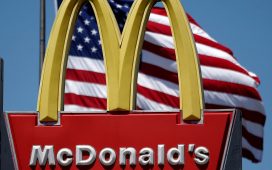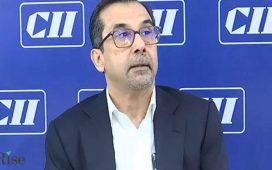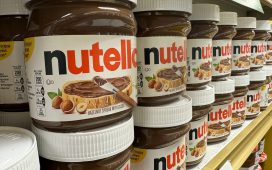Unlock the Editor’s Digest for free
Roula Khalaf, Editor of the FT, selects her favourite stories in this weekly newsletter.
UK government borrowing was lower than expected in September as cash receipts swelled and interest payments dropped, raising pressure on chancellor Jeremy Hunt to meet demands from Tory MPs for tax cuts ahead of the next general election.
The budget deficit came in at £14.3bn last month, according to data published by the Office for National Statistics on Friday. The figure is below forecasts from the Office for Budget Responsibility, which expected £20.5bn of borrowing in the month, and below analyst predictions.
It means that in the financial year to September the UK government borrowed £81.7bn, the ONS said, less than the £101.5bn forecast for the period by the OBR, the independent fiscal watchdog.
The lower-than-expected figure is unlikely to change the overall tone from Hunt in next month’s Autumn Statement, which he has warned will involve “difficult decisions” to cut the deficit and no fiscal giveaways.
But it will raise hopes on the right of the Conservative party that Hunt will be able to make room for tax reductions by spring, when he unveils his next full Budget. Julian Jessop of the Institute for Economic Affairs, a rightwing think-tank, said the data left room for “some well-targeted tax cuts”.
And ratings agency Moody’s revised Britain’s outlook to “stable” from “negative” on Friday evening, saying policy predictability had been restored after heightened volatility last year around Liz Truss’s mini-budget.
Political pressure on Prime Minister Rishi Sunak’s leadership increased overnight after Labour seized two previously solid Conservative seats in England in closely watched by-elections. Sir Keir Starmer’s opposition party overturned Tory majorities of nearly 25,000 in Mid Bedfordshire and almost 20,000 in Tamworth.
In a sign of the impact of the cost of living crisis, separate ONS data released on Friday showed retail sales dropped more than expected in September, with the sharpest falls in clothing and household goods.
The data on public sector borrowing from the ONS showed the government was boosted by strong tax receipts of £77.3bn in the financial year to September, £1.9bn more than the OBR predicted in March.
The government’s deficit was further reduced by lower spending on interest following a monthly drop in the Retail Prices Index, cutting payments on inflation-linked gilts.
The interest payable on government debt fell to £0.7bn in the month, £4.1bn below the OBR’s March forecast, largely as a result of a 0.6 per cent decrease in the RPI between June and July.
The numbers left the national debt hovering at about 97.8 per cent of gross domestic product, 2.1 percentage points higher than in September 2022.
Interest payments on public debt are trending higher around the world, leaving the UK under pressure to show it is getting to grips with its fragile public finances.
UK government debt interest is set to stay at or above 3 per cent of GDP over the medium term, £26bn a year higher than previous levels, the Institute for Fiscal Studies said this month. At the IMF annual meetings in Marrakech this month, Hunt warned the UK faced a worse financial outlook than in the spring as rising interest rates lead to a “repricing” of long-term debt.
Responding to Friday’s borrowing figures, Hunt said: “We spent twice as much on debt interest last year as we did the previous year. This is clearly not sustainable; we need to get debt falling and reduce public sector waste so that those delivering public services can get back to what they do best; teaching our children, keeping us safe and treating us when we’re sick.”
Separate ONS data showed the quantity of goods bought in Great Britain dropped 0.9 per cent in September compared with the previous month — much larger than the 0.2 per cent contraction forecast by economists in a Reuters poll.

Sales volumes in non-food stores fell 1.9 per cent, with retailers blaming the decline on cost of living pressures and the unseasonably warm weather, which hit sales of autumn clothing.
Online sales also dropped 2.2 per cent, while food sales were marginally up.
The volume of retail sales was down 1 per cent compared with the same month last year despite shoppers spending 4.7 per cent more, reflecting the impact of high inflation on households’ finances.
According to a separate closely watched survey published on Friday, UK consumer confidence registered its biggest month-on-month drop in more than three years in October, reversing rises in August and September.








